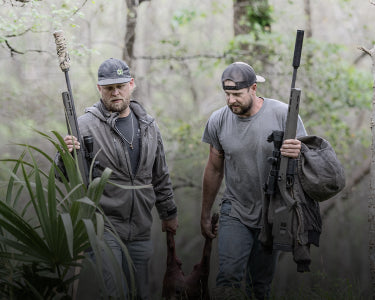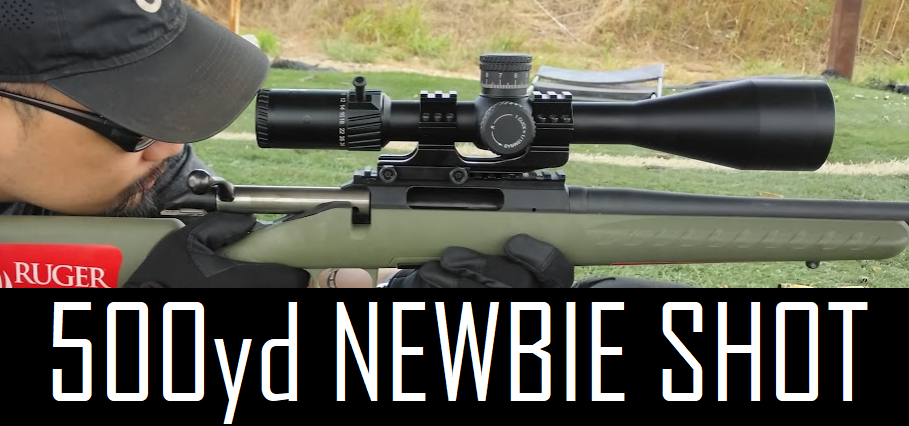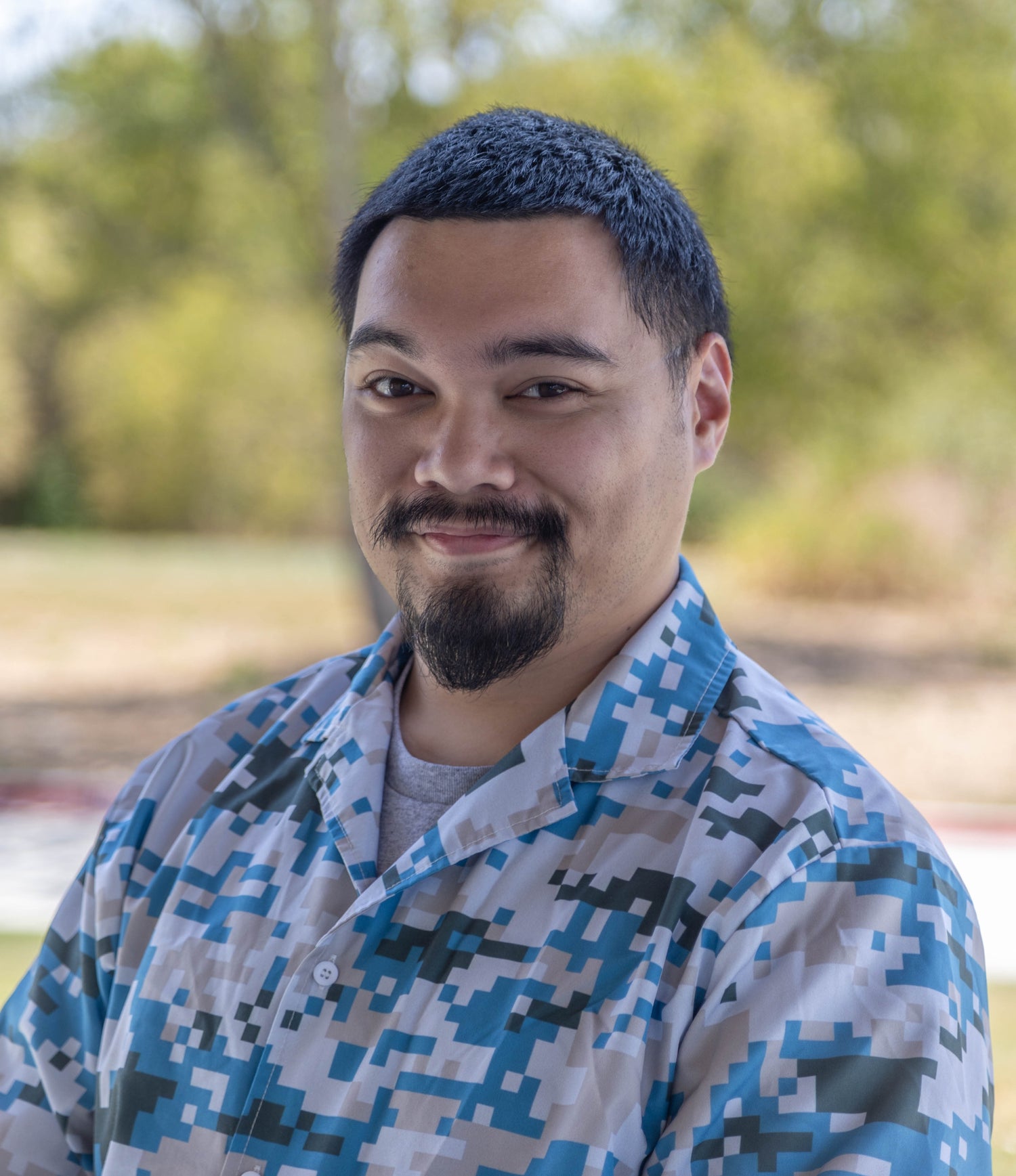In part one of this series on long distance shooting, we discussed how to set up your rifle to make sure it’s as stable and accurate as possible before you pull the trigger. Now in part 2, we’ll describe the actual shooting process.
Why Grouping Matters Before Adjusting Your Scope
I once heard that it was possible to zero a rifle just by firing a single bullet at a hundred yards, then adjusting the windage and elevation to center on that one bullet hole. However, in my experience with West, I was told that it was a whole lot easier to create a grouping of three before we decided to touch the adjustment turrets.
Zeroing for Long Range Shooting
Competitive shooter Cory West and I went out to Extreme Tactics and Training Solutions in Waxahachie to shoot out to 500 yards, a simple enough task for a guy who had never shot a scope with proper instructions before. However, we wouldn’t do much good until we could land our target on paper. For that we needed to zero our scope to 100 yards.
Choosing the Right Scope for Long Range Precision
The Presidio 5-30x56mmLR2 was the perfect scope for the job. The longest-range riflescope in the Presidio series, the Presidio was designed for medium to long range shooting. At a hundred yards, it was no challenge at for this high-magnification optic to display the minute details of the individual bullet holes on our target.
Using Your Scope Correctly
Having little experience with optics, I zoomed all the way in on my target for my first shot and fired. As expected, the paper target we were using to zero was clean.
“Where’d it go?” I said, looking over my scope.
“See what you’re doing there?” said West. “Your sight picture’s gone because you looked away from your scope.”
Making Precise Adjustments with the Presidio
West was right. You have a better chance of seeing your hits if you use your scope instead of your naked eye. It was a good thing I had him as a spotter. As West called out the adjustments in windage and elevation, I adjusted my Presidio. My mentor marveled at how precise the adjustments on the scope turret were. Every click was loud and precise, and West remarked that the engineers at Sightmark truly knew what they were doing.
The Presidio’s long range LR2 reticle made adjustments easy, especially because it was a first focal plane reticle. Even at half-power magnification, the numbers and subtension lines appeared sharp and clear. With the .1 mil clicks, we were able to achieve the surgical precision necessary for a three-round bullseye at 100 yards after firing just twice.
Understanding Range Estimation for Beginners
Getting your rifle to zero at 100 yards is the bare minimum for long range shooting. Next, we drove down to the 500 yard range to do the five-football-fields-long shot. A shot like this would normally be a cinch for experienced shooters, but it was a bit of a challenge for someone like me who had only ever shot iron sights before.
On the range, the various markers made knowing my distance easy. However, in a real hunting scenario, one would have to determine the distance of an object with the following formula:

This equation assumes you know the height of your target beforehand. For example, assume that a boar stands at about 2’6”. That’s 30 inches. When you zoom in on the boar using your Presidio and line the animal’s shoulders with the crosshair, you notice that its feet touch the 8 mil subtension. Therefore:

Using Ballistic Calculators for Long Range Accuracy
If you’re sure that your windage is correct and know your distance as well as the particular ballistic coefficient of your round, you can put them into a ballistic calculator like Hornady’s ballistic calculator mobile app to get the exact adjustments in mils or moa you need to make to your elevation.
Executing Shots at 300–400 Yards
In the same way, we worked our way up to the 500 yard target at the range. There targets at the range were divided into groups by the hundreds. The nearest were setup at 300 yards, behind them came the 400 yard targets, then again after that the 500 yard targets, etc.
For the sake of those who don’t have zero stop turrets like the Presidio, we were zeroed for 100 yards at 6.8 mils. If its turret caps were removed, the turrets could have been reset at the 0 mark, making adjustments slightly easier without having to worry about the math.
Before we could go straight for the 500 yard target, West wanted to see if I could hit the 300 yard mark. We chose the cartridge we were firing from the comprehensive list in the app and provided the distance. The ballistic calculator called for an elevation of 1.4 mils and I adjusted my elevation appropriately.
The ballistic calculator was right on the money. My first shot rang out with a satisfying ping on the man-sized 300 yarder. To make sure it wasn’t a fluke, West had me fire two more shots. With the clarity of the Presidio’s glass, it was easy for both to make their mark. Thanks to the ballistic calculator’s magic, we were able to do the same thing for the 400 yard targets with no problem.
Conquering the 500 Yard Shot
However, when we were finally ready for the 500 yard shot, a strong wind blew in from the east. Now, Hornady’s American Whitetail .308 Winchester has a bullet drop of -51.4” at 500 yards, and at that range, every slight variation that was negligible at shorter ranges would throw off accuracy by several inches.
West estimated that the Ruger American we were shooting with had an effective range of about 800 yards, so 500 was within reason, and we had little to worry about. We input the range into Hornady’s ballistic calculator and I fired.
Miss, far to the right. I may have overcompensated for the wind, or I might have jerked the trigger. Whatever the case, we knew the stakes had been raised. It fell to the Presidio’s reticle to save the day. I fired again and West called the shot – again, far to the right.
Adjusting for Wind and Making the Shot
Using the Presidio’s reticle as a gauge, I adjusted my windage and rested my cheek on the makeshift cheek rest we had assembled for the rifle. I inhaled, exhaled, and squeezed.
The loud crack of the .308 was followed by the round clanging against the steel target. I felt some small satisfaction in testing the capabilities of the Presidio, and West remained surprised that this $449.97 rifle scope was able to perform as well as it did.
The Presidio had told its story and showed us what it could do. It was a solid optic, viable for the hunter, survivalist, or anyone with a rifle.




